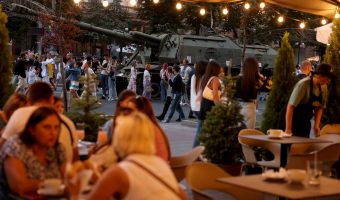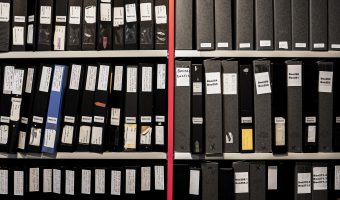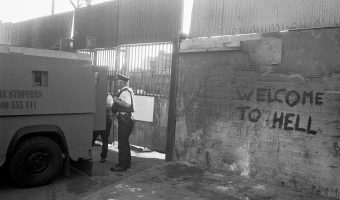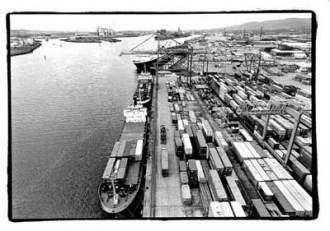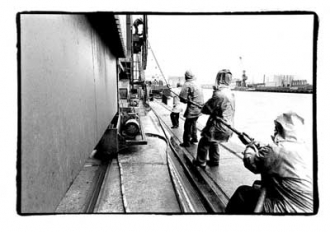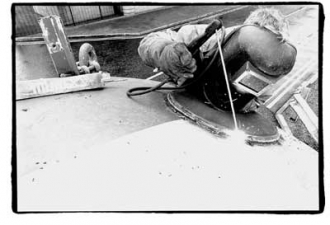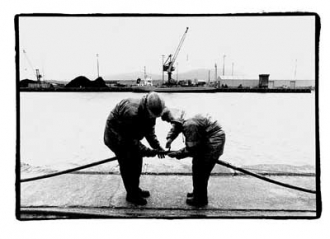About The Exhibition
In July of this year, photographer Richard Adam was commissioned by Belfast Exposed to make a series of photographs observing life on Belfast's Docklands. This series of images looks at the Dockers as community and considers the effects of the Docks on the community at large. It is a significant addition to the Belfast Exposed 18 year old photographic archive which is being digitally preserved and made more effectively accessible.
Historically, the working heart of the city, expressive of its tough character and the focus of sectarian division, Belfast's river and Docklands have in turn shaped and been shaped by the changing economic fortunes of the city; from the early days of great ships, to the Post War years, when its yards constructed pre-fabricated public buildings for the city, or more recently built rigs for the off-shore industry. The Lagan now hosts a wave of property development, housing new leisure and technological industries. Today, although still active and retaining its integrity, it is a significantly more subdued and insular space. This space is approached by young photographer Richard Adam, who over a 4 month period, has become familiar with the Dockers and their work. Adam follows the shape of the men's working day, discovering symmetries, revealing structures, hierarchies of power, comradeship, the heroism within the ordinary and simple and something that men once called 'the dignity of labour'. Recreating the pace of the day from early morning vigour, lunchtime antics, the slower concentration of afternoon towards the resolution of each closing day, poignantly reflecting the energy of its past slowly winding down.


